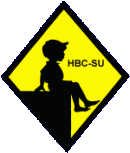
Figure 1.--The English prep dchool boy in 1965 wears a blazer with yellow braided piping. Click on the image to learn about his cap. |

|
Most blazers were solid colors, but there were two primary alternatives, stipes and piping. There were many variations in the striping. There was also braided and ribbon piping. The costs of these alternatives have caused schools in recent
years to drop them and adopt simpler, less expensive blazers. Some schools decided on striped blazers. These were particularly popular in the 1950s. The appearance added a little dash to the basic school blazer, but they tended to be more expansive than plain solid blazers. The striped blazer declined in popularity during the 1970s as many schools attempted to simplify the uniform and reduce costs. Many private schools closed in the 1970s, especially smaller schools. Many schools that continued operating turned to options like coeducation and keeping costs at a minimum to attract as wide a economic specturm of society as possible. Many schools had color piping around the edges of the blazer and on the lapels. The piping was of contrasting colors. Blue blazers, for example, had yellow and white piping. Brown lazers might have red or a white striped piping. Some times piping would be used to reflect status at the school. While blazers were both stripped and piped, stripped blazers were never piped.
Most blazers were solid colors, but there were two primary alternatives, stipes and piping. The black blazer has become very common in Britain, especially among state secondary schools. Private schools tend to have a much greater range of colors.
There were many variations in the striping. There was also braided and ribbon piping. The costs of these alternatives have caused schools in recent years to drop them and adopt simpler, less expensive blazers.
Some schools decided on striped blazers. These were particularly popular in the 1950s. The appearance added a little dash to the basic school blazer, but they tended to be more expansive than plain solid blazers. The striped blazer declined in popularity during the 1970s as many schools attempted to simplify the uniform and reduce costs. The blazer is the single most expensive school uniform item. The stripped blazers are most expensive then the plain blacl blazers.nn Many private schools closed in the 1970s, especially smaller schools. Many schools that continued operating turned to options like coeducation and keeping costs at a minimum to attract as wide a economic specturm of society as possible. We notice a wide range of colors. The nost common were two colors such as blue and white and red and black. We have also noted some three color cominations such as green, red, and yellow.
Many schools had color piping around the edges of the blazer and on the lapels. The piping was of contrasting colors. Blue blazers, for example, had yellow and white piping. Brown lazers might have red or a white striped piping. Some times piping would be used to reflect status at the school. There were two basic types of piping, braided and ribbon.
Related Blazer Pages in the Boys' Historical Web Site
[Main English school blazer page]
[Main blazer page]
[Australian blazers]
[New Zealand blazers]
[Scottish blazers]
Navigate the Related Boys Historical Clothing Uniform Garment Pages
[Return to the Main garment page]
[Return to the Main English school uniform blazer appearance page]
[Blazers]
[Bookbag]
[Caps]
[Coats]
[Hose]
[Kilts]
[Pants]
[Shirts]
[Shoes]
[Smocks
[Suits]
[Seaters]
[Ties]
Navigate the Boys' Historical Clothing Web Page
[Introduction]
[Activities]
[Biographies]
[Chronology]
[Clothing styles]
[Countries]
[Bibliographies]
[Contributions]
[FAQs]
[Glossary]
[Satellite sites]
[Tools]
[Boys' Clothing Home]
